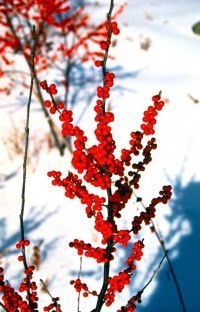
The days are getting shorter and drabness is setting in at the condominium. The association's well-tended garden has lost all its color, and its beautiful architectural features no longer shine as the sun makes its annual retreat.
Instead of glumly accepting the winter blahs, many condominiums are fighting back by importing their own light and color during the cold months.
Carefully placed architectural lighting can highlight the condominium's landscaping and buildings during the longer nights while adding safety and security to the property. And by retooling a garden to include winter plants, splashes of color will shoot through snow and ice, reaffirming that spring is just a few months off.
While architectural lighting and winter plants can help ease cabin fever, they also have a bottom line result — they can add to the condominium's market value, a big plus in a soft real estate market.
Start out Small
Individual owners or landscaping committees who add winter garden plants generally start out small and build from there, according to Al Armitage, senior sales associate at Twombly Nursery in Monroe, Connecticut.
"As a rule, most people won't start a [full-blown] winter garden," says Armitage. "They say, 'I want to add something to give me some winter color.' They add a few at a time."
Over the course of a few years, says Armitage, gardeners will then typically add a few winter garden plants here and there until every winter month is supplied with color.
While there are dozens of winter garden plants available, Armitage says most condominiums start with the following:
Winterberry (Ilex Verticillata) is a Zone 4 shrub that produces bright red berries from after its leaves drop well into January. Bird lovers appreciate the shrub because its berries attract over 48 species of birds. Because it comes as a male and female plant, at least one male is needed to pollinate the plants, unless a native male exists in the area. Making Winterberry particularly attractive is that less-than-mature 3-4 feet tall plants can be purchased by condominiums on a budget. Winterberry is typically used as a border or background in a larger design.
Shrub Dogwood — This ornamental shrub comes in two main varieties, Red Twig Dogwood (Cornus Bailey) or Yellow Twig Dogwood (Cornus Alba). After their leaves drop in fall, the stems turn bright red or yellow and grow increasingly bold as the thermometer plummets. They can get up to 6-8 feet tall but are containable to 4-5 feet with pruning. They are generally used as a backdrop, or as a cluster on an island. To ensure the most colorful stems over winter, a number of stems can be trimmed in early spring, about three to four inches above ground.
Witch Hazel (Hamalelis) — This shrub produces flowers in very early spring, from February to March. It has come in varieties with yellow and orange flowers and now, even comes in a new red variety. It thrives in Zone 5, although there are some varieties that do well in Zone 4.
Ornamental grasses. These come in a variety of shapes and sizes and are a favorite of Armitage, who has some in his own private garden. The grasses, which turn brown in fall but rise above the winter snow to add texture and interest to a winter garden, grow to 6 to 8 feet tall and are generally cut back every spring.
Cornelia Cherry (Cornus Mas) — Cornelia Cherries are large ornamental shrubs that produce profuse yellow flowers very early in spring, and bright red cherry like fruits into the fall. They grow in Zones 4-5 and the flowers will start blossoming anywhere from late February to March. These grow to 15 to 20 feet.
Both winter and summer gardens can benefit enormously from architectural lighting, according to Derek Walters, owner of Outdoor Lighting Perspectives in Lakeville, Massachusetts.
Lights Highlight Seasons
But Walters feels that deciduous trees benefit particularly well during cold months from the increased exposure of architectural lighting.
"In the winter, early spring and fall they (deciduous trees) take on a much more beautiful characteristic than during the summertime," says Walters. "You get to see the colors of the trees, when the leaves fall and it snows in the wintertime you get to see a lot more of the tree, a lot more of the structure. It's very beautiful."
Walter uses outdoor lighting on all kinds of plants — including specimen trees like Japanese maples — and also buildings, all of which combine to increase property values and appreciation of the property. "Our focus is to provide light in an artist's manner that provides safety and functionality," says Walters, who notes that his lights don't shine into units.
For both safety and functionality, Walters uses low-voltage lighting systems, which use much less electricity and are safer than 110-volt systems. "It's low voltage. If you were to touch the end of the wires you wouldn't feel anything," he says.
Also key with low-voltage systems is they can be installed after the landscaping is already planted. When a community is interested in outdoor lighting, Walters says his firm can set up a temporary system which allows a condominium to preview the lighting before purchasing.
Popular layouts include lighting of swimming pools, front entrances and dramatic uplighting for buildings and trees, Walter says.
Outdoor and architectural lighting are becoming more popular, says Walter, as evidenced by the inexpensive solar lights popping up everywhere along the borders of paths. Walters says he takes out many of these solar lights while installing much higher quality lights. Those purchasing the solar lights, Walter says, find out they don't produce much light and decide they want the additional lighting and sophistication that low-voltage lights can provide.
In the depths of winter, a gorgeously-lit community and winter plants that throw out splashes of color are just the tonic for improving the mood at a condominium.






Leave a Comment